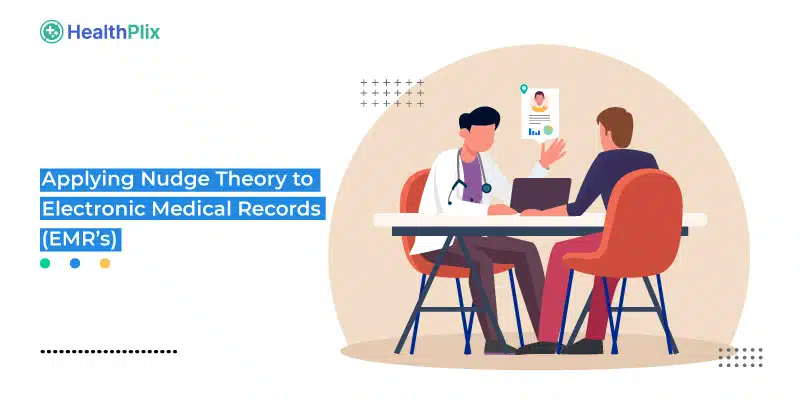Today, doctors are faced with the dual challenge of navigating a vast landscape of medical knowledge and addressing the surge in lifestyle-related diseases. To put this surge into perspective, they find themselves handling a staggering load of up to 4,000 consultations per month. This translates to assessing a minimum of 10,000 health vitals— which can be exceptionally challenging for the human brain to retain at the point of care. In the rapidly evolving world of healthcare, where the stakes are often this high, the importance of making well-informed clinical decisions cannot be overstated. To tackle this, doctors now have an unexpected ally: The costless Nudge!
Traditionally, the doctor-patient relationship was akin to a customer hiring a service provider. However, this dynamic has undergone a profound shift. Doctors are no longer mere service providers; they are dedicated to providing the highest standard of care, assisted by cutting-edge technology. The digital transformation of healthcare, with Electronic Medical Records (EMRs) at its core, has revolutionized how doctors approach patient care. But it’s not just about the digital revolution; it’s about how behavioral science, specifically Nudge Theory, is being integrated into these systems to drive smarter clinical decisions.
In the past, EMR systems used mandatory admin / system alerts, which doctors often disregarded due to their frequency. However, research has demonstrated that subtle, non-mandatory nudges can have a profound impact on doctors’ decision-making at the point of care. For instance, imagine a gentle nudge to a diabetes specialist, reminding them to consider a patient’s overall eye health when prescribing diabetes medication. This simple, cost-free nudge can be a game-changer, helping to detect chronic diseases and related conditions early on.
Nudge Theory, grounded in behavioral economics, draws insights from psychology and neuroscience to understand how human behavior and decision-making can be influenced. While it has been applied in various fields, its application in changing doctors’ prescription safety behavior has remained relatively unexplored until recently.
Today, a costless nudge integrated into EMR platforms, helps in identifying potential or severe drug interactions in real-time as doctors prepare the prescriptions. These nudges prompt doctors to reconsider and adjust their prescriptions, when necessary, thereby empowering them to make safer and more clinically sound decisions. In an era where medical information is exploding, and the margin for error is shrinking, such timely interventions can be lifesavers. Not only this, but Nudges have also emerged as a powerful tool for reducing costs. By nudging doctors towards more informed and safer decisions, healthcare organizations can avoid costly medical errors.
The marriage of technology and behavioral science is ushering in a new era of healthcare. In this ever-evolving landscape, well-designed AI-powered EMR systems coupled with Nudge Theory are equipping doctors with the tools they need to provide top-tier care by gently steering them in the right direction. Given that nudges are underutilized despite having enormous potential in healthcare settings, it is necessary to create and construct conditions that allow clinicians to drive great health outcomes. As we continue to unlock the potential of these innovations, we draw closer to a future where every patient receives the best possible care.
If you are interested to know more on how nudges help in better decision making, schedule a demo now with the modern and intelligent HealthPlix platform.

